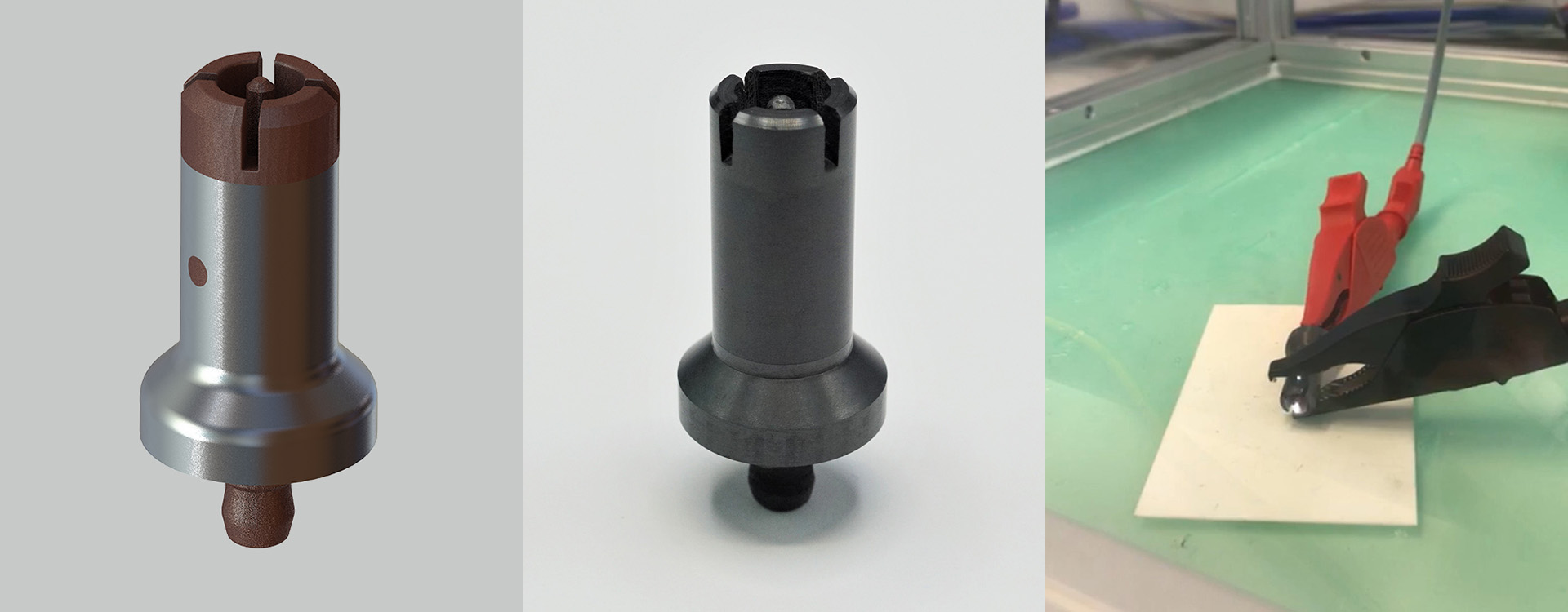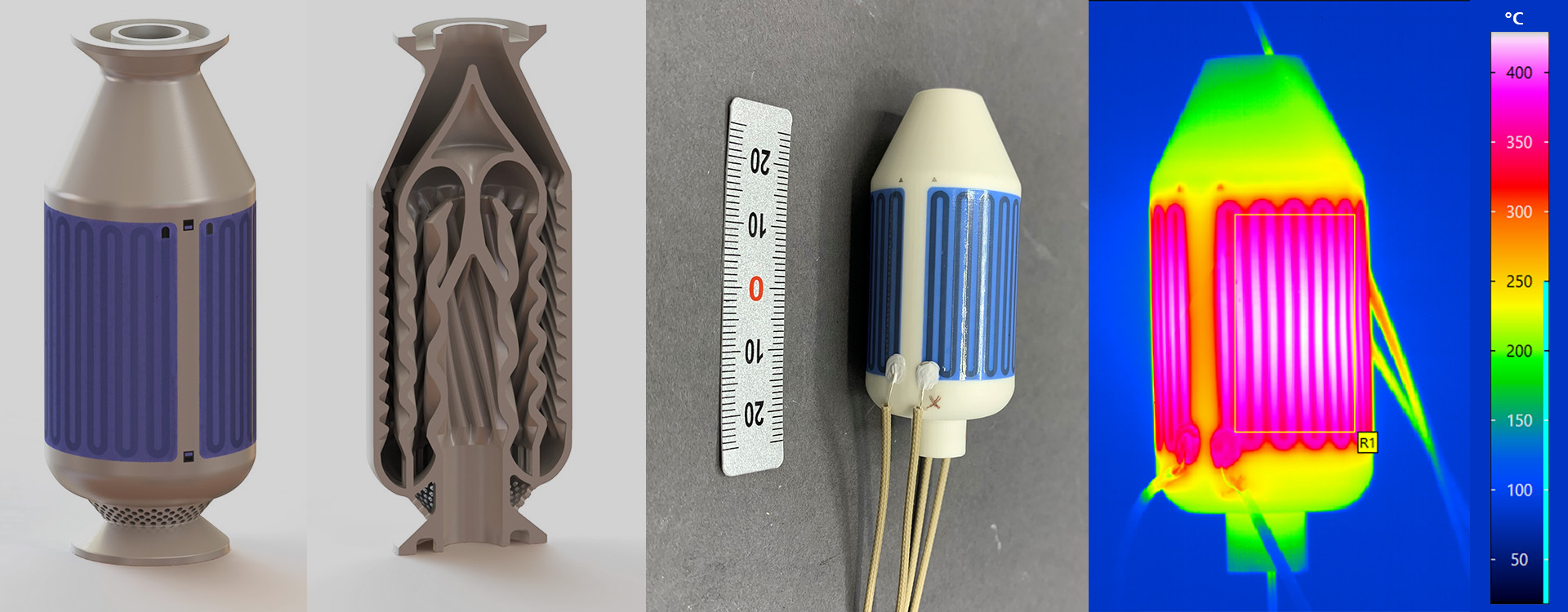In the simultaneous manufacturing of CerAM components, the various materials are combined during the molding process and then debinded and sintered together. The advantage of this approach is that the functional materials can also be integrated inside the component and thus there is a higher degree of freedom in the design. In addition, only one thermal treatment step is necessary. However, this requires that the shrinkage behavior of the different materials is similar and is adjusted beforehand. Consequently, a smaller material portfolio is available compared to sequential manufacturing.
Simultaneous and sequential additive manufacturing of multi-material components
Topic

In the sequential manufacturing of CerAM components, the various valuable materials are processed one after the other:
1. Shaping of the first material (e.g. by CerAM technologies)
2. Debinding and sintering of the first material (1st thermal treatment)
3. Application of the second material to the sintered component (e.g. by thick-film technologies such as screen printing).
4. Debinding and sintering of the second material at lower temperature (2nd thermal treatment).
The advantage of this approach is that no co-sintering is necessary and thus a broader portfolio of material combinations is offered. However, this requires two thermal process steps. A further advantage is that established, highly productive thick-film technologies with high resolution can be used to apply the second material. However, deposition is only possible on the freely accessible surfaces.
